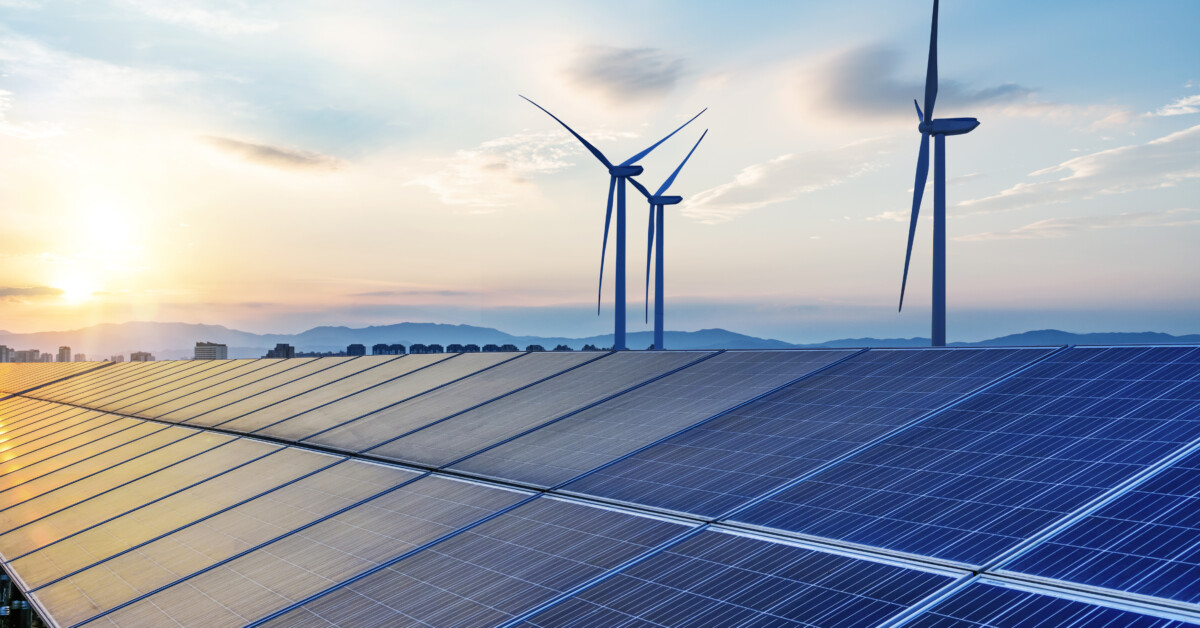
Report on the Role of Subsidies in the Clean Energy Race and Sustainable Development Goals

Introduction
The ongoing debate in the U.S. Senate regarding the retention of Green New Deal-style subsidies from the Inflation Reduction Act raises critical questions about the nation’s position in the global clean energy race, particularly against China. This report examines the implications of these subsidies in the context of the Sustainable Development Goals (SDGs), emphasizing the need for strategic policymaking that aligns with long-term sustainability and economic efficiency.
Lobbyist Perspectives and the China Factor
Lobbyists have intensified their advocacy by invoking concerns about falling behind China in clean energy technologies. A recent letter, endorsed by prominent organizations such as the American Petroleum Institute and the National Association of Manufacturers, highlights the potential consequences of repealing tax credits for green hydrogen. The letter references China seven times, warning that other nations, especially China, may outpace the U.S. in meeting global demand for hydrogen-based energy molecules.
Historical Context of Energy Subsidies
Despite decades of subsidies for alternative energy sources, including hydrogen, wind, and solar, these industries have yet to achieve full market independence. Key points include:
- Hydrogen energy has been promoted since at least 2003 but remains dependent on government support.
- Wind and solar energy received federal tax incentives starting in 1999, yet continue to seek extensions.
- Previous government-backed projects, such as coal-to-gasoline conversion, have been largely abandoned.
- Repeated warnings about losing ground to China have accompanied most subsidy initiatives.
Case Study: Algae Fuels and Market Realities
The Obama administration’s support for algae fuels serves as an example of federally-backed projects accompanied by fears of Chinese dominance. Despite significant investment, algae fuels have not become a major energy source, illustrating the challenges of government intervention in emerging technologies.
Market-Driven Innovation: The Example of Fracking
Contrasting with subsidized alternatives, the shale gas revolution driven by fracking emerged without direct government incentives. This breakthrough demonstrates the potential of free-market mechanisms to drive energy innovation and aligns with SDG 9 (Industry, Innovation, and Infrastructure) by fostering resilient infrastructure and sustainable industrialization.
Implications for Sustainable Development Goals
Evaluating the subsidy debate through the lens of the SDGs reveals several considerations:
- SDG 7 (Affordable and Clean Energy): While subsidies aim to promote clean energy, their effectiveness in fostering sustainable market growth is questionable.
- SDG 8 (Decent Work and Economic Growth): Market-driven innovations like fracking have contributed to economic growth without heavy reliance on subsidies.
- SDG 12 (Responsible Consumption and Production): Efficient allocation of resources suggests minimizing costly subsidies that do not yield sustainable outcomes.
- SDG 13 (Climate Action): Effective climate action requires supporting technologies that can scale sustainably without perpetual government support.
Recommendations
- Congress should consider repealing or reducing subsidies that have not demonstrated sustainable market viability.
- Policy focus should shift towards enabling innovation through market mechanisms rather than government picking winners and losers.
- Investment in research and development should prioritize technologies with proven potential for sustainable impact aligned with SDGs.
- International cooperation should emphasize shared goals in clean energy advancement rather than competitive subsidy races.
Conclusion
The evidence suggests that maintaining extensive subsidies for certain clean energy technologies may not be the most effective strategy for achieving the Sustainable Development Goals. Instead, fostering a competitive, innovation-driven energy sector without disproportionate government intervention could better serve long-term sustainability and economic growth. The U.S. has the opportunity to lead by example in responsible energy policy, ensuring that efforts to combat climate change and promote clean energy are both economically sound and aligned with global sustainability objectives.
1. Sustainable Development Goals (SDGs) Addressed or Connected to the Issues Highlighted in the Article
-
SDG 7: Affordable and Clean Energy
- The article discusses subsidies for green hydrogen, wind, and solar energy, which are all components of clean energy.
- It debates the role of government incentives in promoting clean energy technologies.
-
SDG 9: Industry, Innovation and Infrastructure
- The article references technological innovation in energy, including hydrogen fuel and fracking.
- It touches on the role of government in fostering or hindering innovation through subsidies.
-
SDG 12: Responsible Consumption and Production
- The discussion about subsidies and their effectiveness relates to efficient use of resources and sustainable production methods.
-
SDG 13: Climate Action
- Green energy subsidies aim to reduce carbon emissions and combat climate change, which aligns with SDG 13.
- The article debates the impact of subsidies on advancing clean energy to mitigate climate risks.
2. Specific Targets Under Those SDGs Identified Based on the Article’s Content
-
SDG 7 Targets
- Target 7.2: Increase substantially the share of renewable energy in the global energy mix.
- Target 7.a: Enhance international cooperation to facilitate access to clean energy research and technology.
-
SDG 9 Targets
- Target 9.5: Enhance scientific research, upgrade technological capabilities of industrial sectors, including clean energy technologies.
-
SDG 12 Targets
- Target 12.2: Achieve sustainable management and efficient use of natural resources.
-
SDG 13 Targets
- Target 13.2: Integrate climate change measures into national policies, strategies, and planning.
3. Indicators Mentioned or Implied in the Article to Measure Progress Towards the Identified Targets
-
Indicators Related to SDG 7
- Share of renewable energy in total final energy consumption (implied by discussion of green hydrogen, wind, and solar subsidies).
- Amount of government subsidies or tax credits allocated to renewable energy technologies (implied by the debate on subsidy continuation or repeal).
-
Indicators Related to SDG 9
- Research and development expenditure in clean energy technologies (implied by references to innovation and technology development).
- Number of patents or technological advancements in energy sector (implied by discussion of fracking as a breakthrough).
-
Indicators Related to SDG 12
- Efficiency of resource use in energy production (implied by discussion on subsidies’ effectiveness and resource allocation).
-
Indicators Related to SDG 13
- Reduction in greenhouse gas emissions from energy sector (implied by the goal of clean energy subsidies to reduce emissions).
- Inclusion of climate change measures in national energy policies (implied by the debate on subsidy policies).
4. Table: SDGs, Targets and Indicators
| SDGs | Targets | Indicators |
|---|---|---|
| SDG 7: Affordable and Clean Energy |
|
|
| SDG 9: Industry, Innovation and Infrastructure |
|
|
| SDG 12: Responsible Consumption and Production |
|
|
| SDG 13: Climate Action |
|
|
Source: cei.org







